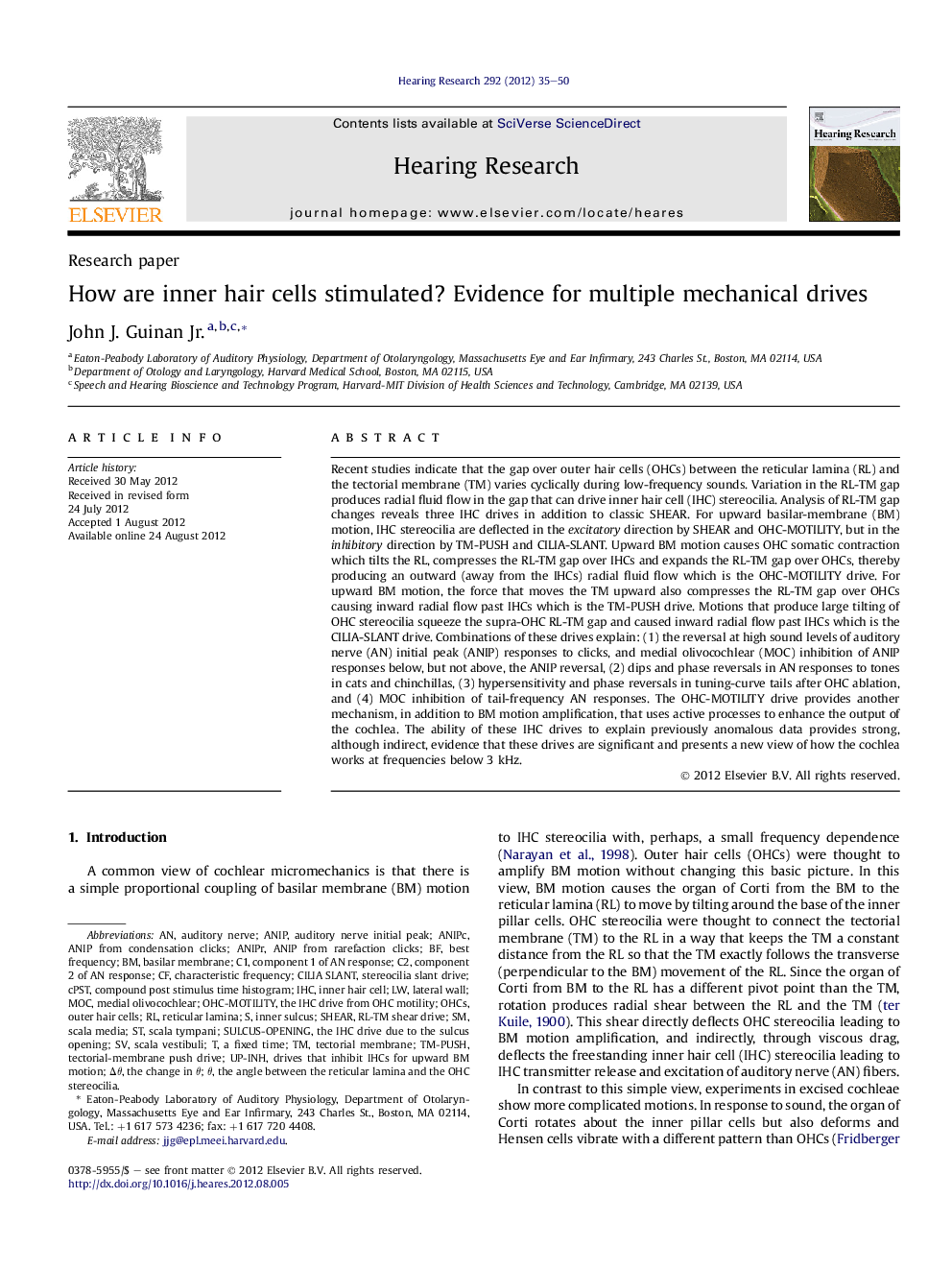| کد مقاله | کد نشریه | سال انتشار | مقاله انگلیسی | نسخه تمام متن |
|---|---|---|---|---|
| 4355264 | 1615608 | 2012 | 16 صفحه PDF | دانلود رایگان |

Recent studies indicate that the gap over outer hair cells (OHCs) between the reticular lamina (RL) and the tectorial membrane (TM) varies cyclically during low-frequency sounds. Variation in the RL-TM gap produces radial fluid flow in the gap that can drive inner hair cell (IHC) stereocilia. Analysis of RL-TM gap changes reveals three IHC drives in addition to classic SHEAR. For upward basilar-membrane (BM) motion, IHC stereocilia are deflected in the excitatory direction by SHEAR and OHC-MOTILITY, but in the inhibitory direction by TM-PUSH and CILIA-SLANT. Upward BM motion causes OHC somatic contraction which tilts the RL, compresses the RL-TM gap over IHCs and expands the RL-TM gap over OHCs, thereby producing an outward (away from the IHCs) radial fluid flow which is the OHC-MOTILITY drive. For upward BM motion, the force that moves the TM upward also compresses the RL-TM gap over OHCs causing inward radial flow past IHCs which is the TM-PUSH drive. Motions that produce large tilting of OHC stereocilia squeeze the supra-OHC RL-TM gap and caused inward radial flow past IHCs which is the CILIA-SLANT drive. Combinations of these drives explain: (1) the reversal at high sound levels of auditory nerve (AN) initial peak (ANIP) responses to clicks, and medial olivocochlear (MOC) inhibition of ANIP responses below, but not above, the ANIP reversal, (2) dips and phase reversals in AN responses to tones in cats and chinchillas, (3) hypersensitivity and phase reversals in tuning-curve tails after OHC ablation, and (4) MOC inhibition of tail-frequency AN responses. The OHC-MOTILITY drive provides another mechanism, in addition to BM motion amplification, that uses active processes to enhance the output of the cochlea. The ability of these IHC drives to explain previously anomalous data provides strong, although indirect, evidence that these drives are significant and presents a new view of how the cochlea works at frequencies below 3 kHz.
► Reticular lamina to tectorial membrane gap changes force fluid past IHC stereocilia.
► Four IHC drives result: two excitatory and two inhibitory for upward BM motion.
► Mixtures of these drives explain anomalous auditory-nerve data, including reversals.
► The OHC-MOTILITY drive enhances cochlear output by active processes.
► The results provide a new view of how the cochlea works below 3 kHz.
Journal: Hearing Research - Volume 292, Issues 1–2, October 2012, Pages 35–50